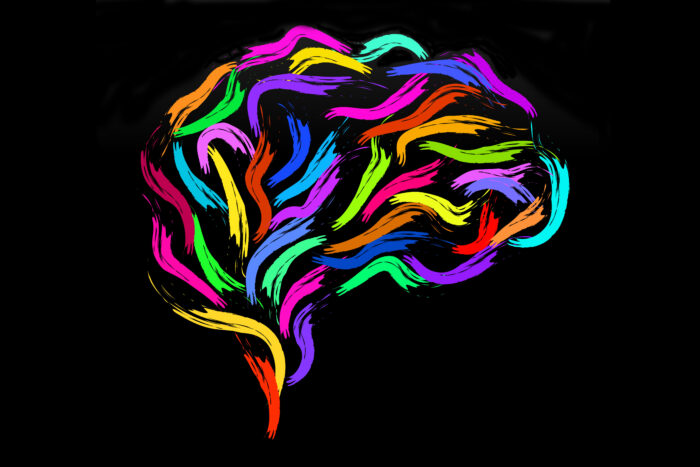School of Medicine joins major NIH brain mapping effort
Will aid understanding of how the brain works in good health and disease
 Getty Images
Getty ImagesScientists at Washington University School of Medicine in St. Louis are joining a national network, supported by the National Institutes of Health (NIH) to map the intricacies of the brain, with a goal of deepening knowledge of how the brain works and generating new insights into how the brain functions in healthy people — and how it malfunctions in Alzheimer’s, schizophrenia, autism and numerous other conditions.
Scientists at Washington University School of Medicine in St. Louis are joining a national network to map the intricacies of the brain, with a goal of deepening knowledge of how the brain works and generating new insights into how the brain functions in healthy people — and how it malfunctions in Alzheimer’s, schizophrenia, autism and numerous other conditions.
The new network, called the BRAIN Initiative Cell Atlas Network (BICAN), is supported by the National Institutes of Health (NIH). The effort focuses on mapping the human brain but also extends to the brains of nonhuman primates and mice, so researchers can see similarities and differences across species and better understand the molecular and cellular mechanisms underlying brain function.
The grants to Washington University will fund parts of two separate projects. One is led by the Allen Institute for Brain Science in Seattle, Wash., and establishes a global collaboration to map the 200 billion cells in the human brain by their type and function. At Washington University, David C. Van Essen, PhD, the Alumni Endowed Professor of Neuroscience and Matthew F. Glasser, MD, PhD, an instructor in radiology at the university’s Mallinckrodt Institute of Radiology, will create and analyze brain maps of individual people and nonhuman primates to determine the kinds of cells that comprise each brain area using data collected from people and animals scanned at collaborating sites.
The second project, led by the Salk Institute for Biological Studies in La Jolla, Calif., aims to describe brain cells in unprecedented molecular detail, classify such cells into more precise subtypes, pinpoint their locations in the brain and track how the aging process may influence these features. Washington University’s Ting Wang, PhD, the Sanford C. and Karen P. Loewentheil Distinguished Professor of Medicine, will manage and analyze the project’s massive genomic datasets with collaborators at the University of California, San Diego and the University of California, Irvine.
Individualized Brain Maps
Van Essen and Glasser’s work for BICAN builds on the Human Connectome Project, a large-scale project led by Van Essen to map the connections within the human brain. Using methods developed for the Human Connectome Project and data from 210 people, Glasser and Van Essen identified 180 areas in each half of the cerebral cortex, which is the dominant structure of the human brain and is largely responsible for the functions that make us uniquely human. They also developed machine learning methods to automatically map these areas in individuals using MRI data.
“The BICAN grant will add to this brain map an enormous amount of information about what genes are active and where they’re active, and how they are coordinated and integrated,” Van Essen said. “This will give us essentially a much richer characterization of what distinguishes one area or one part of the brain from another. Having that information for people without brain diseases will provide a baseline to study brain disorders such as autism and schizophrenia that we know have a genetic component but we don’t understand how genes contribute to the disorder.”
As part of the new study, Van Essen and Glasser will analyze data from people who voluntarily donate their brains to research. As soon as possible after death, the brains will be scanned by MRI and the gene expression in brain cells will be measured. In a few cases, the researchers will also have data from functional brain scans conducted while the study volunteer was alive.
“The excitement around this project is reminiscent of when we were getting started with the Human Connectome Projects over 10 years ago,” Glasser said. “Now we’re taking the next step by integrating cellular and systems neuroscience. We’ll be pairing genetic mapping at the cellular level with functional mapping of, for example, the language system and the visual system, to generate rich data that could advance research into all kinds of brain disorders.”
Brain Atlas Informatics
Wang is an expert on the epigenome, or the instructions that govern how genes are activated or shut down in a given cell. He is part of a project to analyze the epigenetics of 1,500 brain samples from people of various ages, and Wang is tasked with managing the enormous genomic datasets and developing new computational methods to analyze such data.
“The magnitude of the data production is going to be light-years beyond anything we’ve done in the past,” Wang said. “Up to now, we have handled hundreds of thousands of datasets. Now we’re talking about millions. We are also going to be using our experience analyzing the epigenomes of other cell types, including cancer cells, for example, to build a detailed, comprehensive and high-resolution map of the human brain and what it is doing at a single cell level.”
Wang and his colleagues have developed what is called the WashU Epigenome Browser, an online tool that allows researchers to search for information and data characterizing the epigenomes of many species, such as fruit flies, mice and various primates, including humans. The browser also includes some single-celled organisms as well as the genomes and epigenomes of viruses, including Ebola and SARS-CoV-2.
“We plan to develop a lot of technical innovations in web technology, browser development, as well as machine learning-based analytical tools, so we can make engagement with this data a lot easier for researchers who would like to use it,” Wang said.







